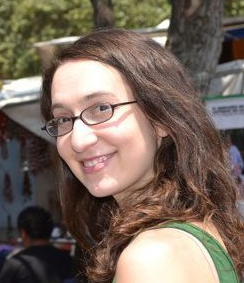Introduction: Digital Humanities, Public Humanities
by Alex Christie, Jana Millar Usiskin, Jentery Sayers, and Kathryn Tanigawa
published July 2014
When we circulated the call for this special issue of NANO: New American Notes Online, we prompted practitioners to consider the intersections of digital methods with cultural criticism: to demonstrate how investments in technologies and computation are not necessarily antithetical to investments in critical theory and social justice. Here, we were motivated by recent research in media studies. For instance, Sharon Daniel collaborates with non-profit organizations and disenfranchised groups interested in using digital media to represent themselves. Inspired by Walter Benjamin’s “The Author as Producer,” Daniel writes: “I see myself as a context-provider stretching the concept of artistic creation from making content to making context [...] A context-provider does not speak for others, but ‘induces’ others to speak for themselves by providing both the means, or tools, and the context where they can speak and be heard” (154). Among others, Daniel has worked with the HIV Education and Prevention Program of Alameda County (HEPPAC) and with women in California’s correctional facilities to digitally author and disseminate social justice research with media artist, Erik Loyer. Elsewhere, in Debates in the Digital Humanities, Tara McPherson brings media and cultural studies to bear on digital humanities methods, calling for “hybrid practitioners: artists-theorists, programming humanists, activist-scholars, theoretical archivists, critical race coders” (154). Central to McPherson’s remark is the claim that technologies are not merely objects; they are, or at least should be, modes through which persuasive scholarship is made, circulated, stored, and revised (155). Such a position demands a delicate balance of critical distance with immersion, or a willingness to self-reflexively examine technologies and technocultures from the inside—all in order to test the limits of relegating technologies to instruments. In a similar vein, Alexandra Juhasz advocates investigating and even hacking a popular system like YouTube, “respecting its rules and limitations, all the while repurposing its aims, and using its vernacular to engage in its analysis” (149). Skepticism and critiques of technologies, not to mention imagining and building alternatives, are thus enriched through active participation in (rather than a removal from) such systems.
Media studies research by Daniel, McPherson, and Juhasz has deeply influenced the work we do at the Maker Lab in the Humanities, and through this issue of NANO we hope to carve out a space for developing further conversations across computation and culture, with particular attention paid to digital humanities projects that are, perhaps by necessity, also public humanities projects. Four recognizable threads emerged from this overlap of investments, allowing us to better understand by whom, for whom, and under what assumptions public humanities is done digitally and digital humanities is done publicly. In the following paragraphs, we touch briefly on each of these threads: 1. the how and where of scholarly practices, 2. how digital collections are constructed and rendered public, 3. the multiple modalities of public scholarship, and 4. the importance of embodied knowledge to scholarly work. From our perspective, these four threads intertwine in the best possible ways.
The How and Where of Scholarly Practices:
One thread we see running throughout this special issue is a persuasive interrogation of how and where scholarly practices happen, and why—echoing Daniel—context and representation matter. For example, Michelle Habell-Pallán, Sonnet H. Retman, and Angelica Macklin underscore the importance of physical place and community organizing to the Women Who Rock (WWR) project: “As we stage physical spaces of convivencia—what scholar/artivista/musician Martha Gonzalez theorizes as the co-creation of social space—both within and outside of the university, we aim to create multi-generational, multi-genre musical experiences in community” (n. pag.). Together with this co-creation of social space, WWR documents its conferences using media such as radio and photography, which can be circulated online in tandem with its oral history archive. Indeed, WWR does not happen in one place, and it does not privilege one mode of documentation or representation. On the contrary, it mobilizes “collective methods of participatory research, as well as community collaboration and dialogue” across spaces and media (n. pag.). As the authors suggest, that approach comes with both challenges and rewards, as it openly engages experiences of survival, resistance, and joy through relationship building (n. pag.). That said, if—in the practice of community-based research—“calls for code-switching, reciprocity, intimacy, and indignation remain difficult to balance” (Kuftinec 5), then WWR responds with a compelling model for giving that balance a try. Their model also serves as a persuasive example for practitioners interested in combining public and digital humanities. The multifaceted, participant-driven, community-based character of the project resists any neat demarcations between what happens online and off, or between the various sites of social justice action.
Elsewhere in this issue, Rachel Arteaga outlines her project, Spar, to show yet another way of integrating digital scholarly practices and physical place into community development projects. Focusing on the rural town of Grays County Harbor, Washington, Arteaga argues that Spar “engages contemporary politics in its attention to access to technology in these geographical areas. One assumption at work in this project is that broadband access is crucial for continued economic development in these communities, and that in its absence in the home, the high school campus must take its place as a resource for students” (n. pag.). With questions of both community access and production in mind, Spar participates in debates about project composition and evaluation beyond the academy. It highlights the benefits of hyper-local approaches to humanities research and ultimately shows how digital projects can avoid dichotomies of scale by negotiating micro- and macro-analyses in response to particular social and cultural questions. Arteaga writes: “By creating occasions for open and productive discussion on shared challenges and aspirations in a hyper-local context, Spar hopes to produce transferable insights into teaching with digital resources for rural educators nationally” (n. pag.). Spar thinks big and small, simultaneously. And like Women Who Rock, it combines public and digital humanities in such a way that they cannot be disentangled.
How Digital Collections Are Constructed and Rendered Public:
Another thread in this special issue involves project-based investigations into how digital collections are made and how digitized materials are rendered public for both human and machine readers. These gestures not only refuse claims that digital collections are value-neutral; they also resist assuming that media are somehow permanent or stable over time. As Lauren Klein, Wendy Hui Kyong Chun, and Lisa Marie Rhody assert, tracing the spectral silences in our digital collections and revising those collections accordingly at once critique technological efficiency and complicate the recovery of historical materials and events. In a recent issue of differences, Chun, with Rhody, declares: “To live by the rhetoric of usefulness and practicality—of technological efficiency—is to die by it” (21). Indeed, amidst current initiatives invested in big data and thinking at scale, we can all too easily ignore what has not been digitized, who is anonymous (and why), and to what effects on the production of history and culture. In this issue, Elise Chenier’s “Oral History and Open Access” reminds us that we need to develop self-reflexive strategies for ethically making cultural content open and discoverable. In her note on the Archives of Lesbian Oral Testimony (A LOT), Chenier observes the following:
Over the past three decades, researchers have collected thousands of hours of data, but little has been donated to publicly accessible archives or libraries (Chenier). Part of the reason is because oral interviewers often fail to make plans to archive their oral research data. Furthermore, most lesbian and gay archives tend to focus on gay male material, thus lesbian researchers do not always see those archives as the best place to preserve their data (Nestle). Hours and hours of research material about a relatively hidden area of historical experience is at risk of being lost forever, and because many of the narrators have died, there is little possibility of reclaiming these stories a second time. (n. pag.)
As Chenier implies, constructing a digital collection takes time, demands significant labor, and ultimately—if not ironically—stresses the impossibility of completely recovering any given historical artifact or event in digital form. Something is always lost, left to mystery, conjecture, or speculation. But that does not mean we should move quickly through digitization initiatives. Instead, learning from projects such as A LOT, we should consider how digital humanities afford interventions in normative histories and spark pressing questions about access, circulation, ethics, and representation. Near the conclusion of “Oral History and Open Access,” Chenier stresses that “digital archives are resurrecting ‘the closet’ that oral history so successfully helped to dismantle” (n. pag.). Despite the democratic rhetoric of openness, and despite the inclusionary impulses of digital projects, we must seriously examine the standards and processes through which materials are digitized, without suggesting that historical media and archival practices can be seamlessly remediated—without change—into new formats and spaces.
The enduring indeterminacy of collections is only compounded by the shifting yet persistent composition of digital media, and it arguably increases when they are rendered open for revision by their audiences. For example, in this issue Elizabeth Alice Honig discusses the collaborative composition of janbrueghel.net. In “Art History and Access,” she mentions how, “[i]n this system [...] [s]hifts in opinion based on new information can be registered instantly, and knowledge about Brueghel’s work is seen not as a static body of data but as formed through a continuous dialogue between many interested parties” (n. pag.). While archives have always been subject to change or editorial intervention, the frequency of that change increases exponentially (or so it seems) when the content is online and digital. This apparent tendency toward change and fluctuation generates concerns about referencing web-based materials. How do we account for revisions over time? For different versions or iterations of content? How do we attribute them? What does constant change say about the articulation of history? Meanwhile, the issue of preserving public, digital projects cannot be ignored. Honig makes the following remark: “A […] challenge for any digital project is funding and sustainability in the grey zone between scholarship and public access. A complex website costs a lot […] Individuals with moderate needs might find start-up funds, but a steady funding stream for continued maintenance and development is hard to ensure” (n. pag.). While the Internet Archive and its Wayback Machine are supporting the persistence of digital materials, the lifecycles of digital collections are increasingly becoming a matter of public good, and redundancy (across machines, formats, and locations) is one common, yet often informal, archiving strategy. Here, projects such as Preserving Virtual Worlds and BitCurator prove informative, as they demonstrate how the technical practice of preserving media cannot be neatly parsed from the critical practice of building digital collections. Equally informative is the public humanities work of Steven Lubar and its emphasis on digital public history, archival management, and scholarly communication.
The Multiple Modalities of Public Scholarship:
As the audiences of this special issue will observe, the arguments made across “Digital Humanities, Public Humanities” assume a variety of forms, and they are communicated through a number of different media. In so doing, they highlight why it is important for public scholarship to be made and conveyed through multiple modalities. Using electronic text, audio, video, and images, contributors engage questions such as: How do specific technologies facilitate certain kinds of public knowledge? How might practitioners collectively approach and participate in community-building through old and new media? What are the technologies that best facilitate public transmissions, who is contributing, and with which publics in mind? Responses to such questions—including responses from Karl Baumann, Benjamin Stokes, François Bar, and Ben Caldwell—frequently blend technologies and participatory design with storytelling and social activism. In their note, Baumann, Stokes, Bar, and Caldwell provide a video showcasing the Leimert Phone Company, a community-based project to reclaim public space by re-imagining and repurposing “outmoded” public pay phones. The project began as a series of workshops bringing University of Southern California students in communication with artists from historic Leimert Park, Los Angeles. Together, the community collaborated to shift the narrative of their neighborhood, using both digital and analog media. In the process, pay phones become installation art, free wi-fi hotspots, community story sites, and nodes for cultural work. Importantly, the video focuses on the design process as a key factor in making this project a social justice project. Through a polyvocal approach, it argues that technologies are intimately embedded in the ecologies they engage and represent, and that inter-community dialogue is necessary for media redesign. The video also demonstrates how the Leimert Phone Company playfully prompts community members to reshape their own culture through technology, and—accounting for this process, play, and dialogue—it acts as an incredibly persuasive medium for the scholarly practice at hand.
Also in this issue, Sam Byrd and Jimmy Ghaphery’s experiences as musicians allows them to approach oral histories in a compelling way—through audio. Complementing the Leimert Phone Company, Byrd and Ghaphery interpret oral history archives at Virginia Commonwealth University by selecting and recontextualizing voices. In their note, they raise questions about the ethics of selection, manipulation, and recontextualization, underscoring the tension between the possibilities of “disenfranchising the subjects [and]...lending their words new meaning and new context” (n. pag.). Using audio as their primary mode of expression, they argue that recontextualization allows them to create an improvised performance with a resonance particular to Richmond, Virginia. Situating their work in the tradition of plunderphonics, they hear recorded voices as both documents for preservation and vehicles for creativity. By remixing the archives, the collage of voices in the Richmond Oral History project challenges longstanding assumptions about how the historical record of a community might be presented. Furthermore, the project’s creative union of digital and public work encourages attention to contentious issues of voice—individual and collective, local and regional, authentic and artificial, distant and immediate—through the media in which it is preserved. In short, Byrd and Graphery use audio to enact the scholarship they want to hear.
The Importance of Embodied Knowledge to Scholarly Work:
Finally, an important thread in this issue is embodied knowledge production or, more generally, the relevance of bodies and embodied labor to both digital and public work. Across distinct articulations of race, gender, sexuality, class, age, and ability, the notes in this special issue differently engage why bodies matter to the intersections of computation and culture, theory and practice, social justice and technology. Chicana and women of color feminist epistemologies, as well as queer of color theorizing, directly inform the Women Who Rock framework. WWR deploys these cultural approaches on the ground, building them into the social and intellectual fabric of their activities. The authors explain: “In our courses, programming, and archive, we examine the politics of performance, social identity, and material access in music scenes, cultures, and industries” (n. pag.). Cutting across academic and public forms of engagement, the project blends research with public communication, student mentoring with community building, and cultural criticism with social justice action. Engaging cultural knowledge through an embodied and enacted register, WWR relies upon feminist, queer, and Chicana perspectives as catalysts for collective action, situating scholarly practice at the center of public knowledge. Elsewhere, A LOT's operating model builds upon decades of progressive oral history methods, which inform how interviews with and about lesbians are recorded and circulated. And both the Spar and Leimert Phone Company projects are steeped in participatory research methodologies that underscore how access to and the use of technologies cannot be separated from social justice and labor concerns.
What’s more, in “Circuit Bending Videogame Consoles as a Form of Applied Media Studies,” Nina Belojevic argues that embodied engagement with the material processes of videogames sparks critiques of gaming industries invested primarily in control, profit, and immaterial labor. Appealing especially to practitioners without formal education in engineering, science, or game design, Belojevic advocates for “hardware hacking, platform modification, and ‘glitch consoles’—all premised on circuit bending—as practical alternatives to the current industry system of production and disposal” (n. pag.). As Belojevic notes, activist gamers become familiar with their videogames beyond the images on the screen, the in-game narrative, or even the code. Indeed, Belojevic’s glitch consoles promote a kind of play that is interested in manipulating the gaming experience as a form of mediation or withdrawal. They invite—even demand—interaction. Such deeply embodied play draws “awareness to where [a videogame console’s] parts come from and through what manufacturing techniques consoles are built” (n. pag.). Belojevic adds: “Even if we can never fully know the origin of every element in a console, this recognition is itself valuable and encourages a shift in how we interact with technologies” (n. pag.). Engaging gaming audiences through game-based media, this project—along with many others in this issue—deploys a mode of cultural critique that is participatory in character. Skepticism and critique are constructed through the technologies at hand.
Public Humanities Done Digitally, Digital Humanities Done Publicly:
In the last instance, we believe the projects highlighted in this issue respond convincingly to Alan Liu’s recent essay in Debates in the Digital Humanities. Calling for more cultural criticism in digital humanities initiatives, Liu declares: “The time is long overdue for staging major conferences or programs designed specifically to put digital humanists in the same room, for example, with new media artists, hackers, and media theorists. In that room, standard issues in the digital humanities (such as ‘standards’ themselves) could be enlarged with sociocultural meaning” (501). As public work, the projects in this issue bring together hackers, artists, developers, librarians, theorists, and cultural workers to extend and often complicate the role digital humanities have played in constructing collections and providing access to historical materials. In this sense, “public” is not simply a feature of a project; it describes how, by whom, and for whom a project is imagined, enacted, and sustained. Meanwhile, as digital work, the projects in this issue locate media and technologies as sites of cultural engagement, demonstrating a commitment to digital humanities practice that queries the social elements of a given framework by rigorously working through it. Yet, without losing sight of their audiences, these projects use digital media and collaboration to engage the publics—local and afar, online and on the ground—through which media circulates, embedding attention to access, circulation, preservation, labor, rights, and knowledge production into their intellectual missions. Collectively, these projects work through technologies to ground cultural work in the public contexts where they operate and enable social change. Moreover, the critical lenses the authors have placed on their own projects heed yet another call by Liu, namely to “help the digital humanities develop an understanding of instrumentalism—including that of its own methods—as a culture embedded in wider culture” (502). Refusing to approach technologies as neutral or passive, as essentialized operations that work outside of culture and context, these notes convey public work about specific communities and social justice issues. From this perspective, the authors reveal public humanities as a stance through which digital humanities methods can be situated, contextualized, critiqued, and rethought.
Indeed, this special issue shows how both public and digital humanities research can be rendered more persuasive through engagement with cultures beyond the academy. In turn, the practices of critical reflection so readily exhibited in publications across the arts and humanities can, as Ien Ang notes, be integrated into community-based work, fostering the development of socially meaningful projects that do not always take the academy or the essay as their starting point. Ang writes: “The skill and knowledge that cultural researchers channel into more or less obscure essay writing may be transferable to collaborative contexts, which would benefit from the illumination and interrogation of the very process of meaning production” (10). In addition to the knowledge and competencies the authors bring to the notes in this issue, the projects about which they write make clear a further commitment to building this knowledge in Ang’s “collaborative contexts.” And as Ang reminds us, such collaborations can be practical without being positivist. Perhaps there, in that investment, is where digital and public humanities truly intersect.
Acknowledgements:
This special issue of NANO has been edited by Adèle Barclay, Alex Christie, Jana Millar Usiskin, Jentery Sayers, Kathryn Tanigawa, and the Maker Lab in the Humanities at the University of Victoria. Special thanks to Stephen Ross for his feedback on the issue and to NANO editors Sean Scanlan, Rebecca Devers, and Ruth Garcia for their incredible work and support throughout the process.
Works Cited:
Ang, Ien. “Who Needs Cultural Research?” Working Paper. Consortium of Humanities Centers and Institutes. Durham: Duke UP, 1999. Print.
Chun, Wendy Hui Kyong and Lisa Marie Rhody. “Working the Digital Humanities: Uncovering Shadows between the Dark and the Light.” In the Shadows of the Digital Humanities. Spec. issue of differences: A Journal of Feminist Cultural Studies 25.1 (Spring 2014): 1-25. Print.
Daniel, Sharon. “Hybrid Practices.” Media Studies and the Digital Humanities. Spec. issue of Cinema Journal 48.2 (Winter 2009): 154-159. Print.
Klein, Lauren F. “The Image of Absence: Archival Silence, Data Visualization, and James Hemings.” American Literature and New Media. Spec. issue of American Literature 85.4 (Dec. 2013): 661-688. Print.
Kuftinec, Sonja. “Critical Relations in Community-Based Performance: The Artist and Writer in Conversation.” Report for Animating Democracy. 2002. Web.
Juhasz, Alexandra. “Learning the Five Lessons of YouTube: After Trying to Teach There, I Don’t Believe the Hype.” Media Studies and the Digital Humanities. Spec. issue of Cinema Journal 48.2 (Winter 2009): 145-150. Print.
Liu, Alan. “Where Is Cultural Criticism in the Digital Humanities?” Debates in the Digital Humanities. Ed. Matthew K. Gold. Minnesota: U of Minnesota P, 2012. 490-510. Print.
McPherson, Tara. “Why Are the Digital Humanities So White? or Thinking the Histories of Race and Computation.” Debates in the Digital Humanities. Ed. Matthew K. Gold. Minnesota: U of Minnesota P, 2012. 139-160. Print.




